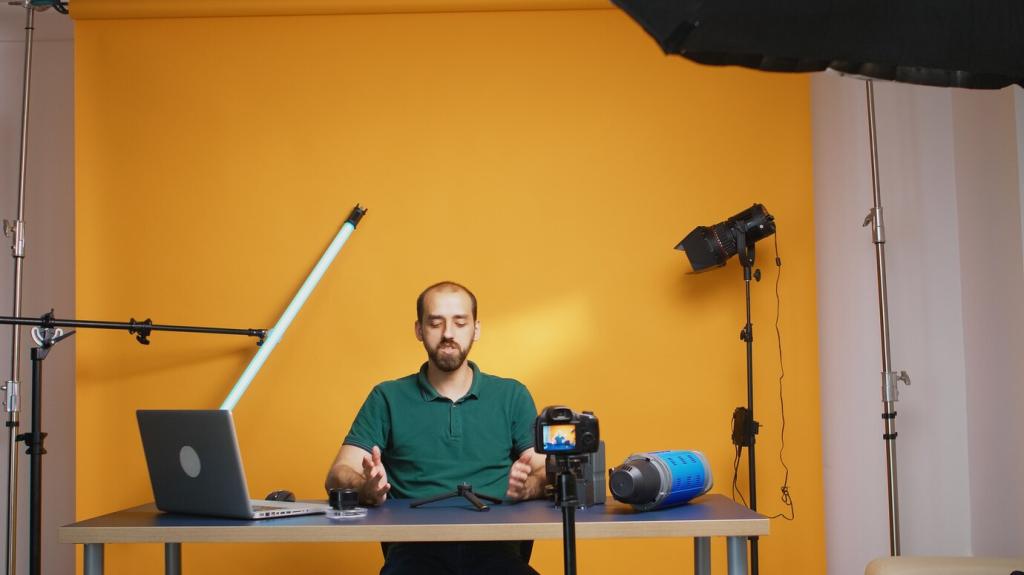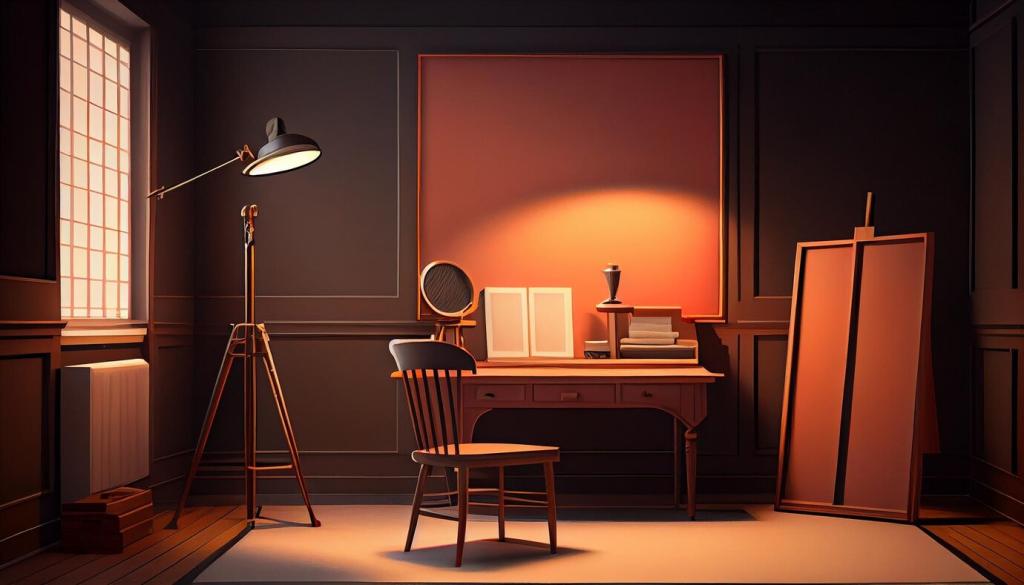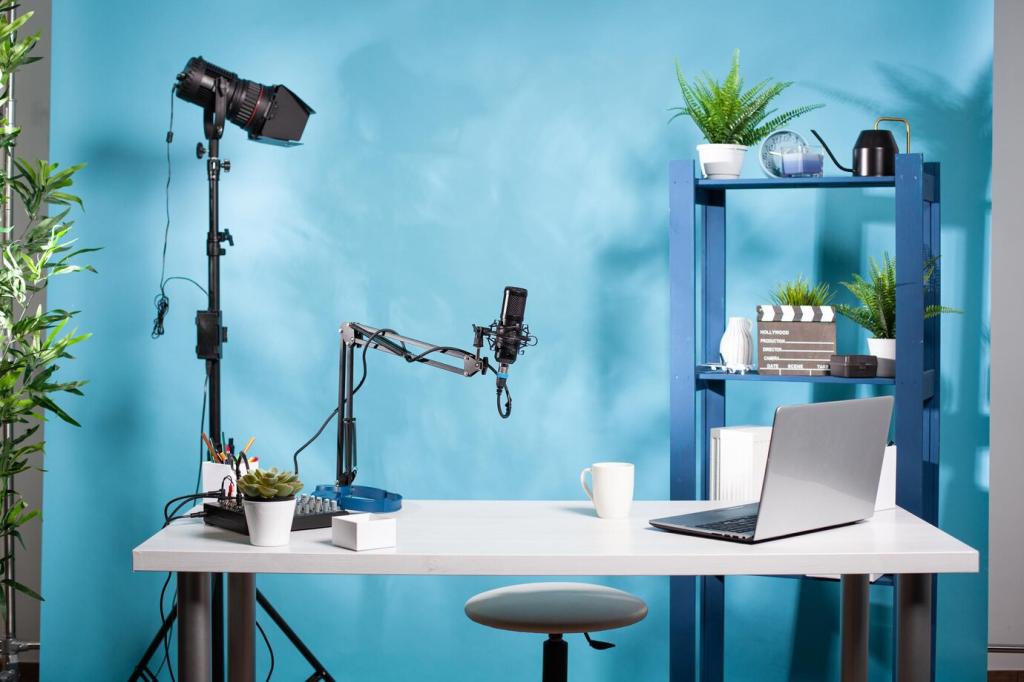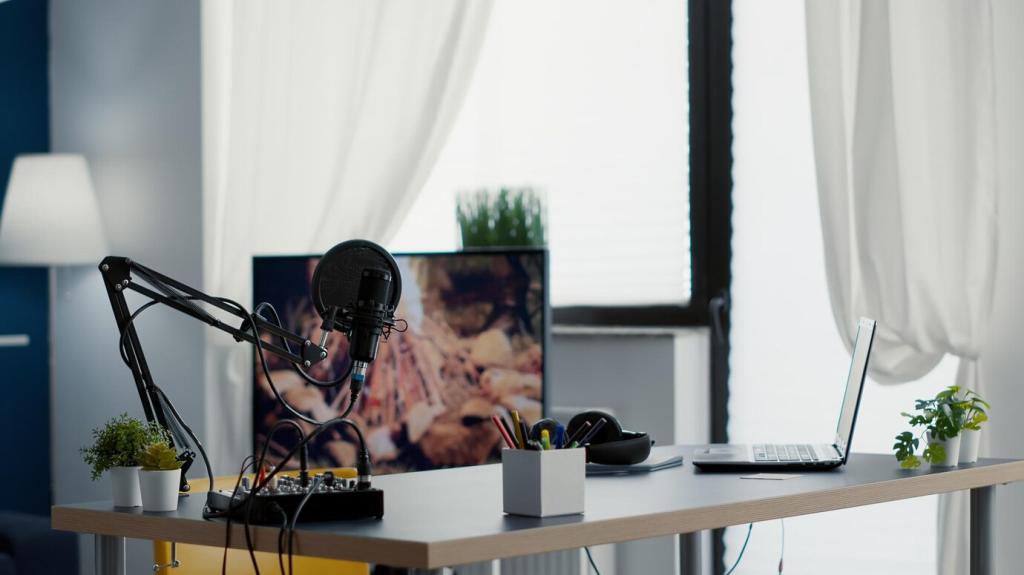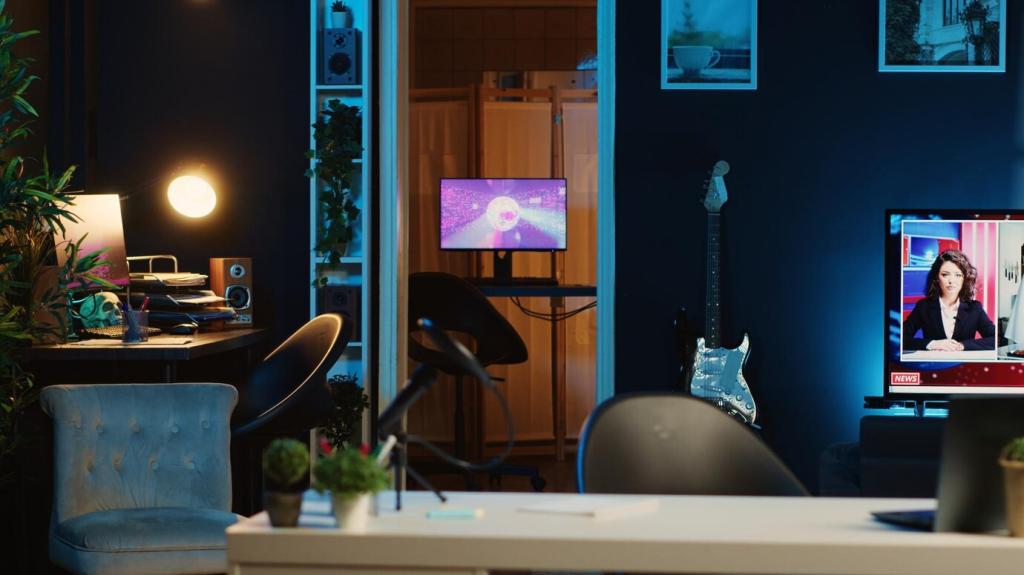Natural Materials as Color Partners
Ash, oak, and bamboo add quiet warmth that keeps minimalism from feeling sterile. Pair pale oak floors with chalky white walls and hazel-toned blocks. The wood’s grain becomes a subtle visual mantra, grounding your drishti during balancing poses.
Natural Materials as Color Partners
Think limestone-gray bolsters, clay-colored storage jars, and undyed linen curtains. These tactile neutrals invite touch and reduce sheen. They absorb light softly, decreasing harsh reflections and helping your gaze settle into a contemplative rhythm.

